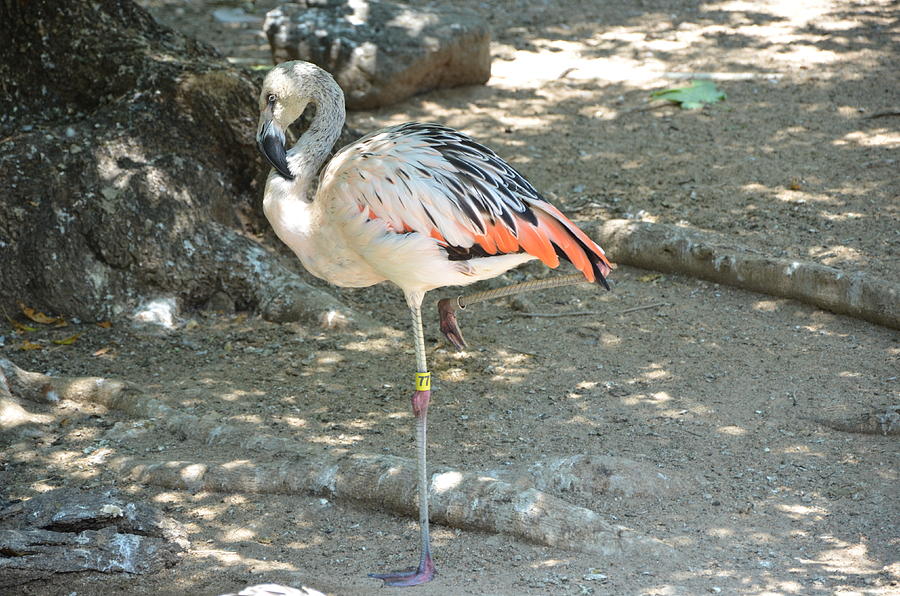

When standing on two legs, both legs are perfectly vertical. Likelihood of being correct 8/10 It’s more comfortable/reduces muscle fatigue Standing on one leg would keep the flamingo from falling over – and potentially drowning – because, as we’ve seen, flamingos have a build that actually gives them better balance when using one leg rather than two. The other leg gets pulled up to rest – lifted towards the body as if it were gently lowering the body onto the ground. This theory suggests that flamingos share a behaviour seen in ducks, whales, and dolphins, and are able to shut down half their brain when they sleep.Īs flamingos go into this half-awake state, a natural reflex kicks in, and the leg controlled by the side of the brain that’s awake stays on the ground to maintain balance. Likelihood of being correct 8/10 It’s a natural reflex to stop them from falling over when sleeping

These results suggest that thermoregulation is a key reason behind the classic one-legged flamingo stance, though doesn’t rule out other theories also having some benefit. They found that when the weather was warmer, more birds would stand on two feet, while in cooler weather, more birds stood on one leg. This theory was put to the test in a 2009 study at the Philadelphia Zoo, where the team tracked the temperature and weather conditions when the flamingos were resting. One estimate puts the heat loss of a flamingo standing on two legs rather than one leg at between 140% and 170% more. The idea that birds living in tropical habitats need to conserve body heat may seem counter-intuitive, but flamingos spend most of their time in the water, which can lower the temperature of warm-blooded animals fairly quickly. Legs and feet are a significant source of heat loss in birds, so holding one leg closer to the body could help them conserve heat. Let’s look through the theories, the reasoning behind each theory, and the likelihood of each theory being correct: It’s a way to conserve heat Rather, there are a number of different theories, some more likely to be correct than others. There’s no universally accepted reason why flamingos stand on one leg. Let’s look at those theories now:Ĩ theories for why flamingos stand on one leg Understanding how flamingos stand on one leg doesn’t tell us why flamingos stand on one leg. It’s possible to pose a flamingo cadaver on one leg, and leave it there, still standing! These things, combined with gravity’s pull and the shape of flamingo’s leg bones, keeps all the joints in place and allows them to stand on one leg for hours on end with no need for any muscular activity.įlamingos can happily sleep standing on one leg, and, incredibly, they can even stay balanced on one leg when they’re dead.


Their ankle joint snaps shut to lock the foot-to-leg joint in place.Standing on one leg is a challenging yoga posture for humans – to maintain our balance we need to continually use our muscles to make adjustments to our posture.įlamingo legs are built very differently from human legs, however, and when flamingos raise one leg two things happen: Before we get started on the why flamingos stand on one leg, let’s look at the how:


 0 kommentar(er)
0 kommentar(er)
